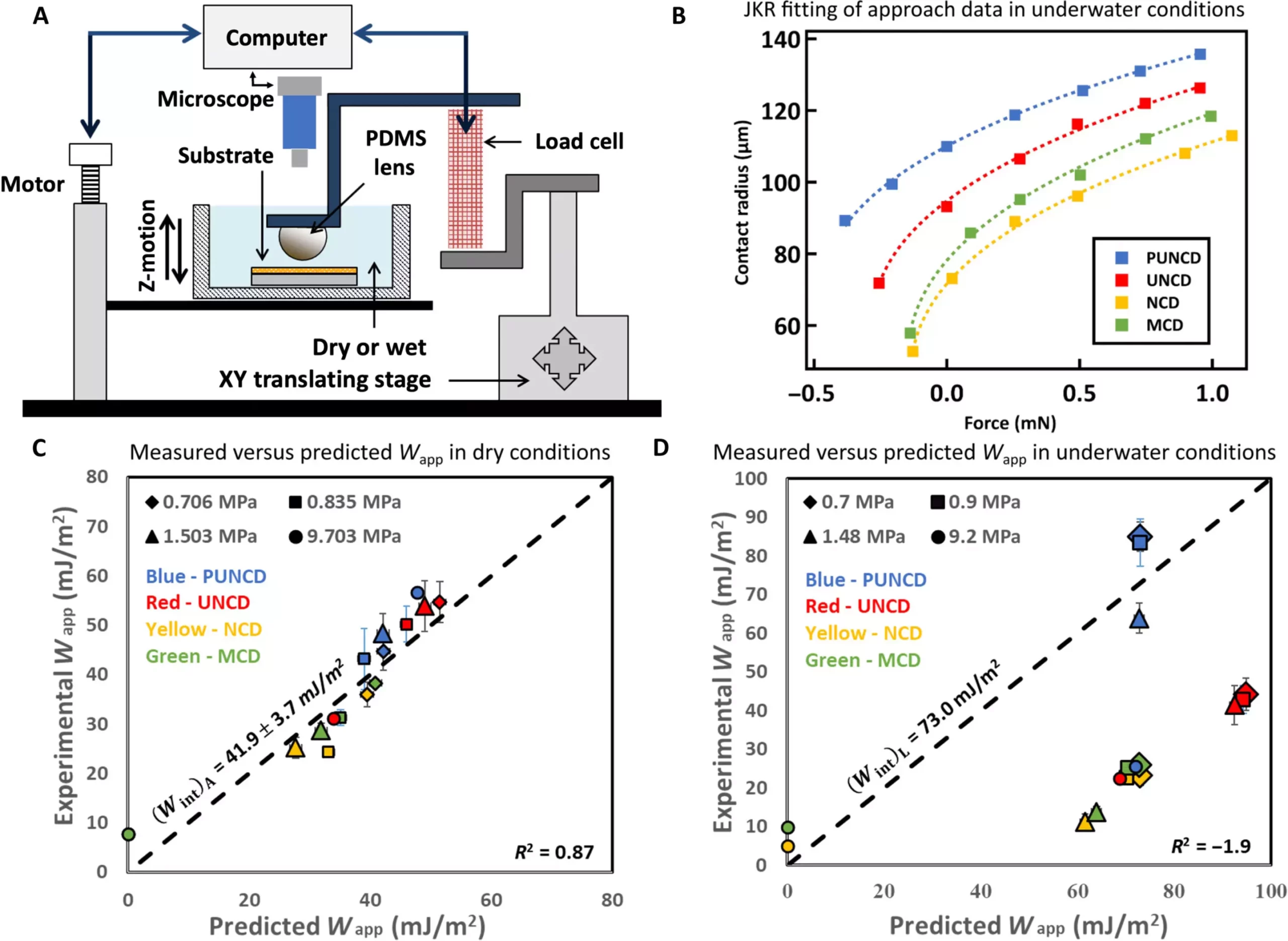Recent research conducted by scientists at the University of Akron and the University of Pittsburgh has challenged long-held assumptions regarding the role of water in adhesion. Led by Dr. Ali Dhinojwala, the team discovered that water can actually enhance adhesion under controlled conditions, contrary to the previous belief that it hinders the process. This groundbreaking finding, published in Science Advances, has significant implications for various industries, particularly in biomedical applications such as bandages, health monitoring sensors, and advanced adhesives.
Traditionally, the presence of water has been viewed as a hindrance to adhesion, as it disrupts the molecular bonds necessary for strong adhesion. Water tends to cling to surfaces and get trapped in surface roughness, making it difficult to achieve adhesion on wet and rough surfaces. However, Dr. Dhinojwala’s team, in collaboration with experts from the University of Pittsburgh, the University of Freiburg, and Argonne National Laboratory, conducted a study that revealed a complex interplay between water, surface roughness, and adhesion dynamics. By measuring the adhesion of a soft elastomer to precisely engineered rough surfaces, the researchers demonstrated how water can actually increase adhesion under certain conditions.
The team’s experiments showed that the presence of water initially disrupts adhesion during contact formation by preventing molecular contact over a significant portion of the surface area. Additionally, the energy required to deform the elastomer and conform to the surface roughness is higher in the presence of water, which reduces initial adhesion. However, surprisingly, the presence of water increased adhesion by nearly four times during detachment. Through analytical models and surface-sensitive spectroscopy, the researchers found that water was trapped in nanometer-sized pockets, contributing to the enhanced adhesion during detachment.
Dr. Dhinojwala emphasized that these findings challenge the traditional view that water universally impedes adhesion. By understanding how water interacts with surface topography, it is possible to leverage surface roughness to enhance adhesion, similar to how geckos use their toe pads to climb wet surfaces. The team plans to further refine these findings to develop practical applications that exploit the surprising benefits of water in adhesion science.
The research conducted by Dr. Dhinojwala and his team has opened up new possibilities in the field of adhesion science. By reevaluating the role of water in adhesion and uncovering its surprising benefits, the researchers have paved the way for innovative advancements in various industries. This study serves as a reminder of the importance of challenging existing assumptions and exploring new avenues for scientific discovery.


Leave a Reply